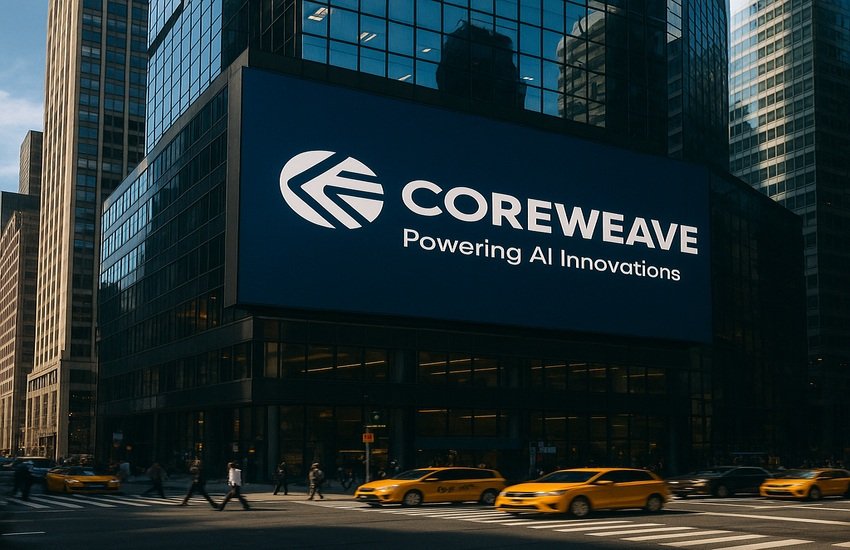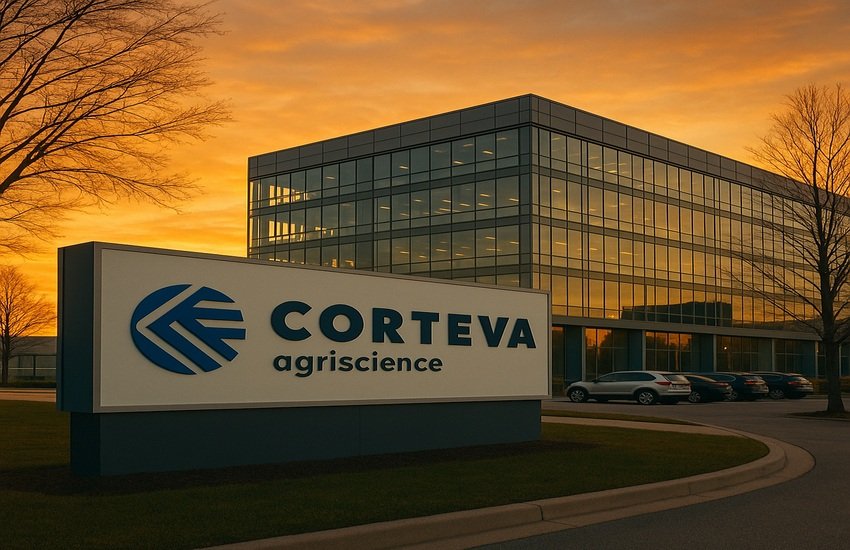CoreWeave shares jumped 6.2% following the disclosure of a massive $6.3 billion cloud-computing deal with Nvidia.** The agreement, originally signed in April 2023 but only now revealed via a recent SEC filing, obligates Nvidia to purchase any unsold capacity from CoreWeave’s data centers through April 13, 2032. This unprecedented long-term commitment by Nvidia, a key strategic partner and 6.6% equity stakeholder in CoreWeave, marks a significant milestone for the cloud service provider at a time when AI infrastructure demand is surging. It also addresses growing investor concerns over CoreWeave’s aggressive capital spending and debt-heavy expansion model. The new disclosure coincided with a strong Q2 earnings report, including 207% YoY revenue growth and a record $30.1 billion backlog. While Nvidia’s China antitrust investigation pulled its stock marginally lower, the commitment it made to CoreWeave signals institutional validation. But is the upside justified, or does it simply mask underlying risk?
Revenue Visibility & Utilization Support from Nvidia
The newly revealed $6.3 billion agreement between CoreWeave and Nvidia provides an unprecedented level of revenue visibility and utilization assurance for the AI cloud provider. Under the terms, Nvidia is contractually obligated to purchase any excess computing capacity from CoreWeave through April 2032, essentially guaranteeing baseline utilization even if CoreWeave’s direct customer workloads do not fully occupy its infrastructure. This removes a significant overhang that previously existed due to concerns around demand matching and customer ramp-up timing. Notably, CoreWeave’s model requires substantial upfront capital deployment into data center buildouts and GPU clusters, creating exposure to underutilization. The Nvidia backstop ensures that these data center assets will not sit idle, regardless of external client demand fluctuations. Importantly, this agreement is layered on top of a broader long-term backlog of $30.1 billion, including expansions from key clients like OpenAI, Goldman Sachs, and Morgan Stanley. This translates to a stronger floor for forward revenue recognition, reducing the earnings volatility investors had priced in earlier. The deal also aligns well with CoreWeave’s strategy of contracting GPU infrastructure for both training and inference workloads, which are increasingly diversifying across verticals from healthcare to entertainment. CoreWeave’s infrastructure—purpose-built for AI workloads and managed through its Mission Control platform—now benefits from both sticky client commitments and a sovereign-scale safety net from one of the most influential companies in AI. While the capacity guarantee is not equivalent to incremental demand, it serves as an insurance policy that derisks revenue forecasts and strengthens the foundation of CoreWeave’s long-term growth thesis.
Capex De-risking Amid High-Leverage Model
One of the most pressing concerns around CoreWeave has been its outsized capital expenditures—projected between $20 billion and $23 billion in 2025 alone—along with an increasingly levered balance sheet. Q2 2025 CapEx totaled $2.9 billion, with expectations to ramp sharply in Q4 as deployments for 900+ MW of active power go live. This scale of spending has raised flags about sustainability, especially when juxtaposed against continued net losses (Q2 net loss: $291 million) and ballooning interest expenses ($267 million in Q2). However, the Nvidia deal changes the narrative. By backstopping unused capacity through 2032, Nvidia indirectly mitigates the risk of stranded capital. This reassures lenders and investors alike that CapEx is not speculative but tied to long-term demand, either from Nvidia or third-party clients. Importantly, CoreWeave has also pioneered novel debt structures to support these investments—such as its recent $2.6 billion delayed draw term loan at SOFR + 400, fully underwritten by top-tier banks. This financing reflects a declining cost of capital, with yields compressing over 900 basis points from earlier non-investment-grade facilities. Additionally, CoreWeave’s vertical integration strategy, including the proposed acquisition of Core Scientific and the completed acquisition of Weights & Biases, is aimed at improving operational efficiency and capturing margin both up and down the AI stack. The deal would eliminate over $10 billion in future lease liabilities and enable $500 million in annual cost savings by 2027. In this context, the Nvidia deal acts as a bridge between near-term capital intensity and longer-term profitability, effectively de-risking execution at a time when the market remains structurally supply-constrained.
Ecosystem Moat Strengthened By AI Alignment
CoreWeave has positioned itself not merely as a GPU infrastructure provider but as a full-stack AI cloud platform. The Nvidia capacity agreement further cements this ecosystem role by tying CoreWeave directly into Nvidia’s global AI supply chain. Nvidia not only supplies CoreWeave with GPUs but also owns 6.6% of its equity, participates in large-scale system integrations like the GB200 NVL72, and now effectively acts as a capacity insurer. This tight coupling with Nvidia signals CoreWeave’s strategic relevance within the AI infrastructure race. Beyond Nvidia, CoreWeave has executed multiyear contracts with leading AI labs (OpenAI, Cohere), trading firms (Jane Street), banks (Goldman Sachs, Morgan Stanley), and healthtech innovators (Hippocratic AI), indicating a diverse and growing customer base. Additionally, its acquisition of Weights & Biases adds upstream value by embedding observability and inference services into the customer workflow, bringing over 1,600 enterprise clients into the fold. The company’s SUNK (Slurm on Kubernetes) initiative and VFX conductor services further extend its platform reach, while its Mission Control system ensures automated, scalable cluster management. This verticalized infrastructure—further reinforced by the proposed acquisition of Core Scientific and buildouts in Lancaster, PA and Kenilworth, NJ—creates localized low-latency inference zones that are vital as AI use cases diversify. In essence, CoreWeave’s ecosystem moat is becoming harder to replicate as it controls not just infrastructure and software, but the customer interface. The Nvidia deal magnifies that defensibility by making CoreWeave the only cloud provider with a multi-year compute consumption backstop from the world’s most valuable semiconductor company.
Customer & Vendor Concentration Risk Remains Elevated
While the Nvidia agreement provides downside protection, it also underlines a persistent risk—CoreWeave’s reliance on a small number of strategic customers and suppliers. Nvidia is not just a customer and investor; it is also the sole supplier of CoreWeave’s high-performance GPUs. This triple role magnifies counterparty risk. If Nvidia were to reassess its strategic priorities, experience regulatory pressure, or face product delays, the repercussions for CoreWeave would be immediate and significant. For example, Nvidia is currently under preliminary antitrust investigation by China’s market regulator, which could potentially affect global operations. Moreover, a significant portion of CoreWeave’s $30.1 billion backlog is tied to just a few large customers—OpenAI alone accounts for $11.9 billion, which is almost 40% of the entire backlog. Such concentration creates exposure to renegotiation risk, delay in contract fulfillment, or platform shifts that could materially impact CoreWeave’s forward financials. Additionally, the company’s CapEx timing is backloaded (notably in Q4 2025), and dependent on timely hardware delivery, access to powered shells, and grid infrastructure—all bottlenecks that are already acknowledged as constraints. Despite investments in diversified product lines and customer segments, the lion’s share of CoreWeave’s current economics still leans on a narrow set of relationships, making its operating model sensitive to shocks. While this is somewhat mitigated by long-term contracts and backstops like the Nvidia agreement, the company’s dependency on a handful of players for both demand and supply remains a structural vulnerability that must be monitored as it scales.
Key Takeaways
CoreWeave’s recent stock price jump is fundamentally supported by a rare structural agreement with Nvidia that offers multi-year revenue assurance, significantly derisking its capital-intensive, supply-constrained AI infrastructure model. Combined with a $30.1 billion backlog, expanding multi-vertical demand, and declining cost of capital, the company has strengthened its platform and reduced near-term execution risk. However, investor enthusiasm should be tempered by persistent concentration risks, high leverage, and limited margin flexibility in the near term. From a valuation standpoint, CoreWeave remains richly priced: as of September 15, 2025, the company trades at **20.6x LTM EV/Revenue**, **27.7x LTM EV/Gross Profit**, and **39.4x LTM EV/EBITDA**, despite negative normalized earnings and free cash flow. With an **LTM P/E of -31.6x** and a **levered free cash flow yield of -27.8%**, the stock assumes continued flawless execution and macro tailwinds in AI demand. While the Nvidia deal enhances downside protection, valuation discipline remains critical given CoreWeave’s high operational gearing and customer concentration.





